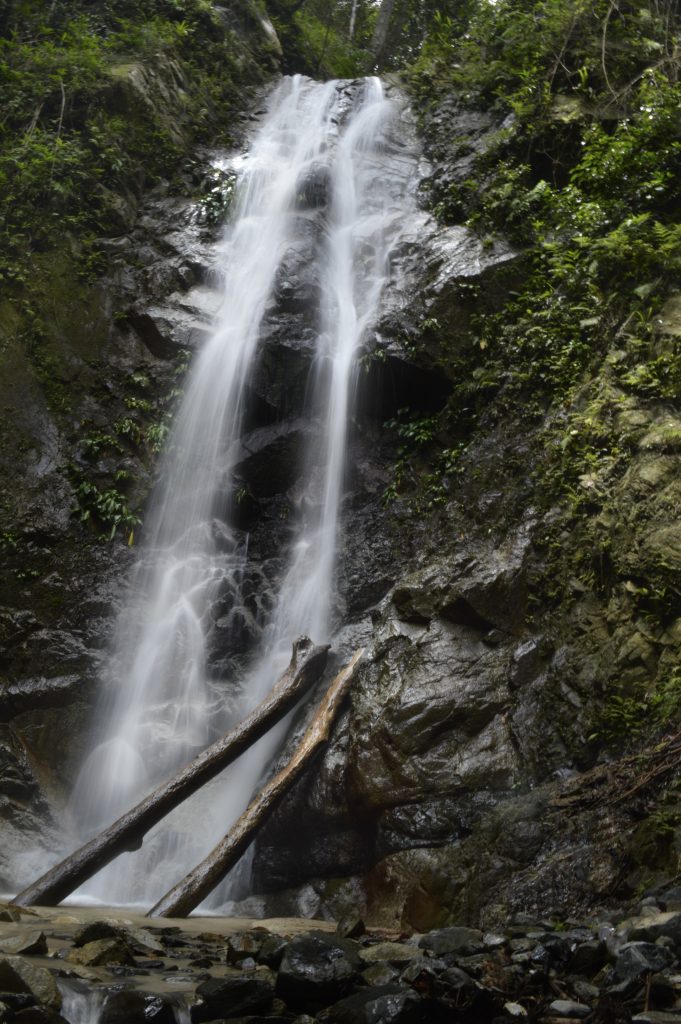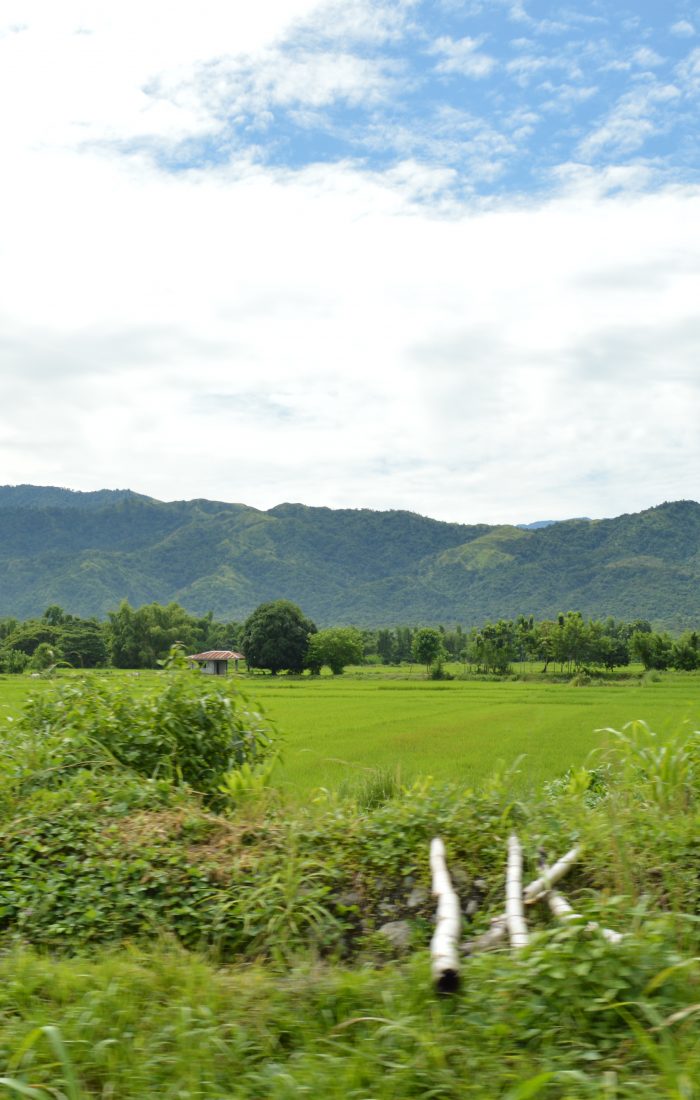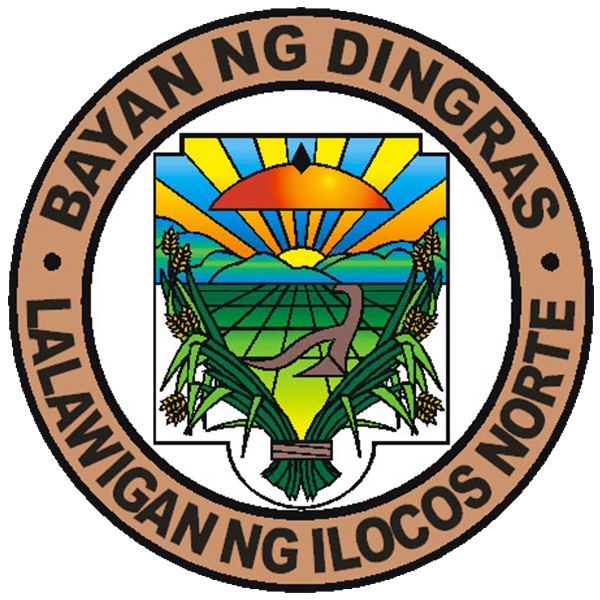About
”Dingras has a total population of 36,258 with 7,252 households. The Locality’s Average Annual Growth rate is 1.03%. most of the population are engage in farming as the primary source of income.
The Municipality of Dingras has a total area of 17,962 hectares, ranks 8th in size aming the 23 municipalities including Laoag City. It accounts for practically 5.2% of the total land area of Ilocos Norte and corresponding percentage to the municipal area composed of thirty one (31) barangays. Six (6) are on the Poblacion and twenty five (25) in the rural area. Out of the total area 6,305 hectares is devoted to rice and corn production. Other non-productive areas are devoted to livestock production, swine production and other livelihood projects.
The main development trust of the Municipality of Dingras is to prepare the layer of facilities that will respond to the service requirements of the expected growth in industry and in tourism sector. The Municipality of Dingras was indentified as Growth Center of the eastern town of Ilocos Norte by NEDA. As a Growth Center, the LGU of Dingras envisioned to implement priority that will lead to town’s fullest development potentials as well as its surrounding municipalities.
The twenty six (26) rural barangays are divided into four cluster and most of its barangay roads are gravel or earth filled that are hardly unpassable during rainy seasons. Hence, there is a need to improve these barangay roads to provide an efficient linkage of these barangays to the poblacion where commercial establishment and activities are located. Also, these urban barangays possesses a vast agriculture land which produces considerable agriculture harvest all year round, the project will benefit the farmers in the said barangays in transporting their agricultural products to the market.

Our Vision
“Dingars shall be the center of trade, agriculture and industry in the eastern part of the Ilocos Norte and shall become self-reliant and sustainable community that satisfies the basic needs of its constituents.”
Our Mission
“The political, civic and religious leaders shall give the residents a life of peace, integrity and stability; enhance the social and economic status of their inhabitants; and render dedicated and zealous public service.”
Establishment of the Town
one of the early towns of Ilocos Norte which was established by Juan de Salcedo is the municipality of Dingras. Records of the Augustinian friars show that Dingras was founded by Salcedo in 1598 in the name of St. Joseph as its Patron Saint before Ilocos Norte was divided into Ilocos Norte and Ilocos Sur in 1819 by the Royal Cedula of February 2, 1818. Its founding was after the establishment of the towns of Batac founded in 1580, San Nicolas founded in 1854, Laoag in 1585. It was succeeded by Paoay, founded in 1593, and Bacarra founded in 1594. After the founding of Dingras in 1598, the other municipalities of Ilocos Norte were established including Badoc in 1714, Sarrat and Vintar in 1724. Creations of other towns were carved out of Dingras like Piddig in 1775, Banna, Santiago (now Solsona), and Marcos in 1960.
Corollary to this, the ruin, town plaza, Spanish ancestral houses, convents, public market of the town were built in accordance of the encomienda system imposed by the Spanish colony. These edifices are living proofs of the glory of Spain in its early days. Owing to a decree issued by that time, these important edifices were built through forced labor performed by the natives where male Filipinos between the ages of 16-60 render services for forty days every year.

Who Finds Dingras
When Capt. Juan De Salcedo was going north in his expedition, he stopped at laoag. He found the natives wearing necklace, bracelets and trinkets of gold. He also found gold dust among their articles of trade. This surprised the capt., so he inquired about the source of their wealth. He was told that some 20 kilometers east of laoag, there was region where gold was as abundant as the leaves of the tress. The news interest the captain, but history failed to record whether or not Salcedo reached the region. The other people heard the news were to find that there was a little or no truth about the reports. Instead of tracing Salcedo’s steps, they paid their attention to the inviting plains and its rivers. They cut the big tress and cleared the wide plains, and began to build crude homes and till the soil, planting crops like rice, corn and camote. Soon some intelligent people came to settle. More lands were cleared and much wider areas were cultivated until it became a prosperous settlement.

Historical Edifices
The encomienda system is the form of government commissioned by the Spanish Governor General throughout the foundation of the early established municipalities by Spanish colonizers. This system began in Spain. Originally, encomiendas were assigned to religious orders, charitable groups and Spaniards. The assignment of the grant carried the right to collect tribute from the natives living within the boundaries of the grant. Spaniards were assigned land grants as a reward for their services rendered to the crown. The appointed encomenderos in obedience to the order must have to order it.
Along the encomendero system, construction of churches within the town must built at the center of the community. Near it a plaza was laid out. Surroundings the public square were stone houses of the Spanish residents and the principalia. All the natives were also prevailed to built their houses not far from church.

First Inhabitants
It is said that the first people of the place were of Indonesian origin. Later, the civilized Malays occupied the northern sides of the river and moved southward to occupy Naguillan which called Bagut. As settlers increased in number, they moved eastward to occupy the barangay now known as Cacafean and Matantanobog. About the end of the 18th century, these ethnic groups were raided by the Christian from the lowlands. Among their brave warriors were, Onze, Angin, Langao Dugguing. These leaders lead their warriors in many furious battles, however, they where defeated because of their inferiority, both in numbers and in numbers. Thus, more immigrants occupied the lowlands and the ethnic people retreated to the mountains where their descendants can be located up to now. The last group to occupy the area were civilized Malays who drove away the Indonesians. The latest immigrants were from Sarrat, Piddig, San Nicolas; others came from Ilocos Sur, Abra and La Union.

Farming: A Way of Life
The principal occupation of the people ever since the early settlement of the town is agriculture. There are wide, fertile and flood plains drained by the Padsan River and its tributaries. Irrigation system is extensive. The principal food crop of the people is rice. Tobacco is also one of the important farm products of the people.

Rice
Cultivation
Much of the land in Dingras is ideal for farming because of its wide terrain which receives more rain than most towns of Ilocos Norte. The Dingrenios, through hard work, patience and diligence, have been able to make the land yield enough rice for themselves as well as for other towns and to other regions. Rice cultivation is the principal livelihood of the Dingrenios.

Commerce, Trade & industry
Trading in this town received its encouragement in 1885. The Governor set aside one week for market day and the trading center is the Padsan Valley. A modern sanitary market was constructed in 1952. Vegetable farming and stock raising were among the most important industries of Dingras because of the wide grassy lands for pasturing areas.

Developmental Role
The role of the Local Government Unit of Dingras is to help the Provincial Government of Ilocos Norte to build a base of economic development in the local level taking advantage of or filling a specialized make in National Markets; and simultaneously providing its constituents livelihood opportunities and higher income.

Potential Investment Areas
The municipality of Dingras, basically an agricultural town has an irrigated area of 5,135 hectares; rainfed lowland, 828 hectares; upland, 260 hectares, highland or hillside, 915 hectares; and fishpond and creek areas, 32.82 hectares.

River
Disecting the town into its northern and southern parts is the Padsan River which flows from the Condillera in the east and moves towards La Paz, Laoag City in the northwest. The river teems with the fresh water fishes and oysters which provide a good source of livelihood for the people.

Climate
The town experience different seasons, the wet and the dry seasons. The very long dry seasons starts from November and last up to April, while the wet or rainy seasons starts from May up to November.

Beliefs, Customs and Practices
In Dingras, there are elaborated network of beliefs and practices through which he deals with the world around him. These beliefs and practices guide the Dingrenios in going through the different stages of life.

Planting
Dingras is an agricultural town. It is the Rice Granary of Ilocos Norte.
In the old days farmers had many practices before planting rice. Before planting palay the farmers has to cook malagkit with coconut milk, boil chicken, particularly a rooster, and offer it on a bamboo stand with buyo, basi and cigar under a tree near the rice fields. This is an offering to the unseen spirits who are called upon to help the farmers reap a good harvest.
The farmers sow the seeds after the first rains in May. When it does not rain the farmers and their families perform rituals like having procession in the fields invoking the God of Agriculture to give them rain. They believed that there were practices that angered the spirits so there was drought. Only processions and offerings could appease the spirits.
On planting corn the first three hills should be planted as the sun rises, so the farmer should go to the fields early before sunrise. All other hills may now be planted on the other part of the day. This practice was believed to have the corn grow fast.
Persons with few and broken teeth should not plant corn, lest the corn will have few and inferior grains.
In planting coconuts, the seedlings should be set on the ground during a full moon so that the nuts will grow big like the moon. Coconuts were planted noontime when the sun was overhead and shadows were at their shortest. This belief was for the reason that the coconut trees bear fruits even if they were not tall. While planting coconuts one must carry a child on his shoulder so the coconuts will bear plenty of fruits.
In planting ampalayas, the farmer planting should not smoke cigar lest the fruits will be very bitter. Harvesting should not be done unless another fruit has come out, so that the plants will bear many fruits.
tHE dINGRAS lOGO
- Shield, derived from the Seal of Ilocos Norte
- Seal As A Whole, shows that Dingras is highly agricultural, being known as the rice granary of Ilocos Norte and that farming is the basic occupation of the people as depicted in the foreground
- Plow, represents one of the agricultural implements used by farmers
- Hat, a native hat used and made by the farmer himself, from natured white squash locally known as TABUNGAO to protect him from the incident weather
- Ricefields, represent the vast agricultural hands where most of the people derive their income. Aside from palay, many other products have been introduced to augment their meager income like hybrid corn, tobacco, garlic, vegetables and others
- Mountain Ranges, represent the Cordillera with its virgin forest and minerals where the sun rises giving hope everyday
- Circular Line, symbolizes oneness, unity and harmony
- Gold, symbolizes that agriculture brings wealth

Ding-ras
Origin of its Name
As in other communities, the town of Dingras has an interesting legend as to how its name evolved. The legend, as handed down from generation to generation, was classically romantic, a gallant heir – warrior fighting for a lady’s love.
In the early times, there were two prosperous barangays in the present site of the town each one ruled by a powerful chief or datu. They were bitter and mortal enemies. Naslag was the powerful chief of the barangay north of the river while Allawigan was the chief of the south of the river. One day, Allawigan and his warriors went to hunt. Ras, his son, was the bravest among them. During the hunt, Ras followed the deer, which went north across the river. While he was watching the fleeing deer, he saw a beautiful damsel gathering wild flowers on the opposite side of the riverbank. She was Ding, the daughter of Naslag. To help the lady, Ras gathered the most beautiful flowers near him; put them at the head of his arrow and shoot near the lady’s feet. Ding looked at the other side of the river and waved her hands. Ras went home happily.
Ras begged his father for permission to win Ding for his wife. But because the fathers of Ding and Ras were bitter enemies, the only way he could win her was in the open battle fiercely fought between the two tribes. Ras led his father’s warriors. They fought valiant and came out victorious in the end. Ras asked for Ding as a prize but Naslag refused. This angered him and hurled a challenge to the bravest warrior of Naslag in single combat with Ding as prize. The challenge was accepted. The combat was fought, and again, Ras was victorious. He brought Ding triumphantly to Allawigan, his father. Thereafter, the people named the two barangays Dingras, after Ras, their valiant warrior ruler, and Ding, his beautiful wife.
Address List
- Brgy. Madamba, Dingras, Ilocos Norte
- +077 600 0156
- dingrasagbiag@yahoo.com
Social Networks
Links List
LGU Dingras
The Rice Granary of Ilocos Norte
